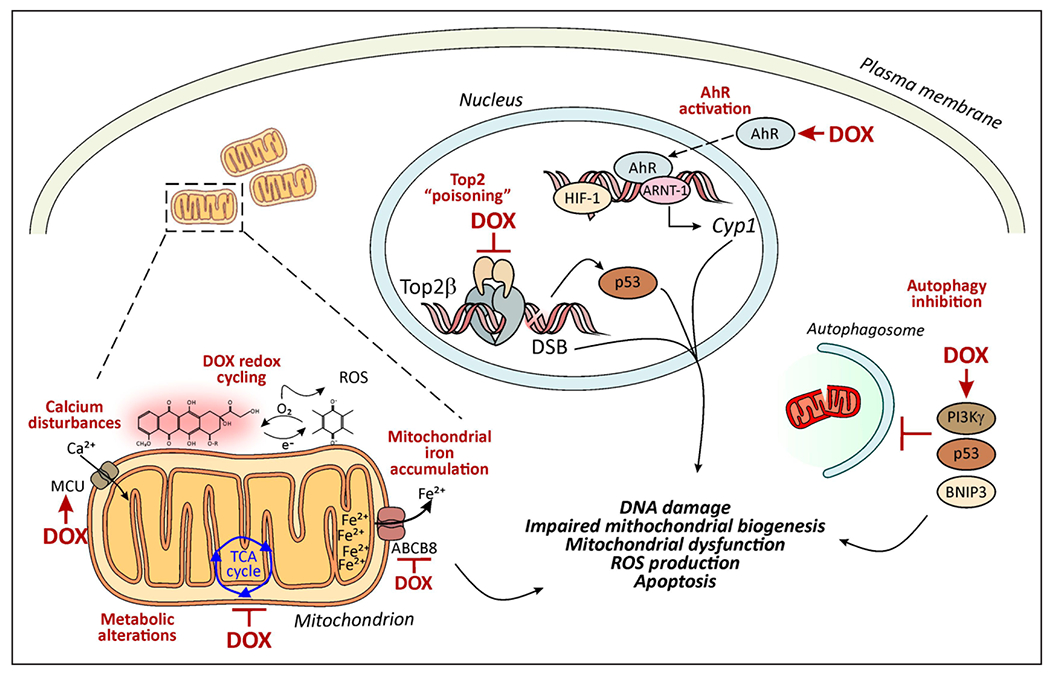Figure. Mechanisms of anthracycline cardiotoxicity.

Several mechanisms have been proposed to contribute to the cardiotoxic effects of anthracyclines such as doxorubicin (DOX). These include topoisomerase “poisoning,” alterations of cell survival and metabolic pathways, and excessive generation of reactive oxygen species (ROS). In the nucleus, DOX binds Top2β (topoisomerase 2β), thereby promoting p53-dependent DNA damage responses and altering the transcription of genes involved in mitochondrial biogenesis, for example, PGC-1α (peroxisome proliferator-activated receptor-γ coactivator 1-α). As a polyaromatic hydrocarbon, DOX activates the AhR (aryl hydrocarbon receptor), a ligand-activated transcription factor that translocates to the nucleus to induce the expression of Cyp1 (cytochrome P450 family 1 enzymes). DOX can inhibit the binding of the HIF (hypoxia-inducible factor) heterodimer (HIF-1 α/ARNT [aryl hydrocarbon receptor nuclear translocator]) to the hypoxia response element, leading to a decrease in the HIF transcriptional response. DOX induces defects in mechanisms of organelle quality control such as autophagy and mitophagy, which are under the control of PI3Kγ (phosphoinositide 3-kinase-γ), p53, and BNIP3 (BCL2/adenovirus E1B 19 kd-interacting protein 3) and exacerbate DOX-associated mitochondrial dysfunction and ROS production. DOX can trigger ROS production directly or after being reduced to semiquinone radicals that undergo redox cycling, generating superoxide and hydrogen peroxide. DOX can bind to iron, resulting in iron cycling and subsequent production of cytotoxic hydroxyl radicals via the Fenton reaction. These events occur in the mitochondria where DOX preferentially accumulates on its binding to the mitochondrial phospholipid cardiolipin. ROS production also can be secondary to accumulation of calcium or iron within mitochondria, resulting from activation of the MCU (mitochondrial calcium uniporter) and inhibition of the iron transporter ABCB8 (ATP-binding cassette subfamily B member 8), respectively. DSB indicates double-strand break; and TCA, tricarboxylic acid cycle.
